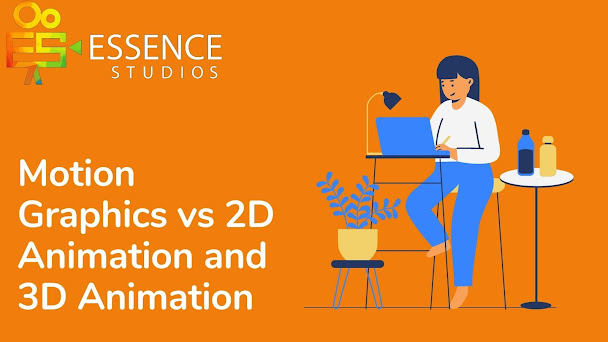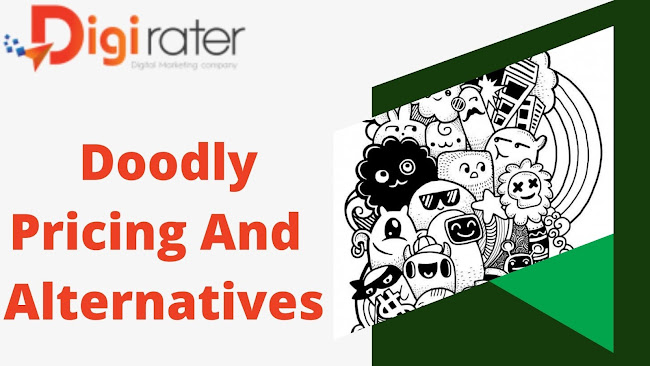Difference Between ,Motion Graphics, 2D Animation and 3D Animation
Motion Graphics vs 2D Animation and 3D Animation – Which one is right for you?
You've made the decision to tell your company's story in animation. What's your first choice for your animation masterpiece? Unless you are looking to create something truly unique with stop motion video (be a guest), then you will need to decide between motion graphics or 2D for your project.
Which one is best for you? Fudge has been around the block many times, so when it comes time to choose a style of video, we are experts. We'll show you this week what animation is, how they are used, and where they excel.
Teaching, explaining, selling, and telling
What are you trying achieve with your video? You probably have at least one of these goals if animation is chosen for your business. These are the goals you have for your animation and what you expect from your viewers. You will be better able to place your video and create it.
Explaining
There's no prizes for guessing that this is an animated explainer video! These videos are versatile and can be used to simplify complex ideas, companies or products before encouraging action.
Training
Animation is a powerful teaching tool. Animation inspires enhanced recall and information retention. Conventional training methods are unable to cope with the challenges of training thousands of people and working on a limited budget. Fudge created animated videos from seemingly uninteresting topics that are relatable, memorable, and encourage viewers to share knowledge and passion.
Selling
Animations are a great way to stand out in a world where so many electronic devices are competing for your attention. They are entertaining, catch your attention, and can be very memorable. An animated product launch could help you sell a product or build interest through a demonstration. Your brand can become instantly recognisable by adding animated characters and logos.
Telling
You can think of company videos, internal communications and safety demonstrations on aircrafts. Animation is a great way to communicate your message clearly and make it memorable. It is a powerful way to get your viewers to take positive actions.
Once you have an idea of the goals for your video, let us move on to the formats. These formats are all very flexible. Let's see what they are and how they excel.
Motion Graphics
Motion graphics is one of those things that you don't realize you can't describe until you are staring at your keyboard and trying to type something. They are sequences of animation or live action where images, symbols, and text are given motion to communicate information. This is a type of animation that sits at the forefront of graphic design. Sometimes, the voiceover narrates what the visuals represent.
It is a great way to keep viewers interested, providing them with something to read while they are watching the visuals and listening to the voiceover. Motion graphics is an efficient method of information conveyance because it contains a concentrated multisensory information load.
It's easier to show than explain. Here's our video on VTSL. It's easy to see why animated infographics are called motion graphics. These graphics are great for presenting information in a clear and concise manner. They also keep viewers' attention. It is the fluid, dynamic movement of imagery and text that keeps you interested.
When you need to convey statistics, data, or training in a corporate setting, motion graphics are a great option. It's not fun to look at a chart or a bar graph. But if you can make those figures come to life and take your viewers on an animated journey that explains why these figures are important, they will be much more engaging.
This information-driven animation content is perfect for presentations, pitches, and classrooms. This motion infographic is becoming more popular as museum-goers become more familiar with it. It replaces the daunting plaques of text that are next to exhibits. They are usually set on loop, but more modern museums offer interactive elements that allow for multiple animated options through touchscreens, buttons and voice commands.
2D Animation
Everyone knows what 2D animation means, right? Although we all have seen cartoons, some of us are more familiar with 2D animation than others. However, 2D animation has evolved to be far more sophisticated than what we remember. This animation format can help you build your brand visually, and expand your imagination.
Fudge offers a variety of services, including character creation. This is a great way for your audience to feel connected with you through 2D animation. Your character should tell a story and you want your brand message to resonate.
2D animation can be customized in many ways. This tool is a true chameleon, and can be used in a variety of styles and tones. Sometimes, cartoony animation is necessary to communicate a more friendly or humorous tone. However, this is not the only option for 2D animation. For a stylised example, see our animated Local Care Record work for the NHS.
Because it is different and worthy of notice, it grabs attention. It also primes you to pay attention so that you are entertained. Animation is fun! Keep watching! You can show your brand's personality, strategies and make a great first impression on a company website. This animation is also great on social media channels, which encourage sharing and on video streaming sites, as well as on big animated billboards. It works well wherever you aren't expecting 2D animation.
2D animation is also a great option for training videos and internal communications. Animation is a great way to get attention to a dull topic like information governance. Animation is an easy way to re-engage a lapse of concentration.
3D Animation
The majority of the above information can be applied to 3D animation. So what is the difference? 3D animation is more difficult to create, so a 3D animation shows that you value what you represent in 3D animated.
This is still a cutting-edge format, so it's important to position yourself as a forward-looking company. This is partly due to recent advances in 3D animation, modelling techniques, and software that's becoming easier to use. It's still a popular video style.
Sometimes 3D is the only option. For example, if you want to showcase animated plans or architectural designs, it's not possible to replicate a flythrough in 2D. A 3D animated video that shows interior and exterior speculations about a project can be a great way to win funding or get your build approved.
Do you remember Time Team, where they would take geophysic imagery and create a 3D representation for the archaeological site? It was one of my favorite Sunday afternoon activities! It was possible only with 3D.
What about VR?
Virtual reality and Augmented Reality are hotter than the sun. If you want to be involved in a company's advancement and showcase how exciting it is, then you will need to use 3D. Virtual reality is still in its infancy so it is difficult to know the full potential of this technology. You might consider creating a VR experience for conferences or events. Situation-based training is a proven and highly effective VR solution for military personnel and other professionals that are exposed to danger.
I hope you have understood the differences between these animation types. Motion graphics and 2D animation software can often be used in an explainer video format.



Comments
Post a Comment